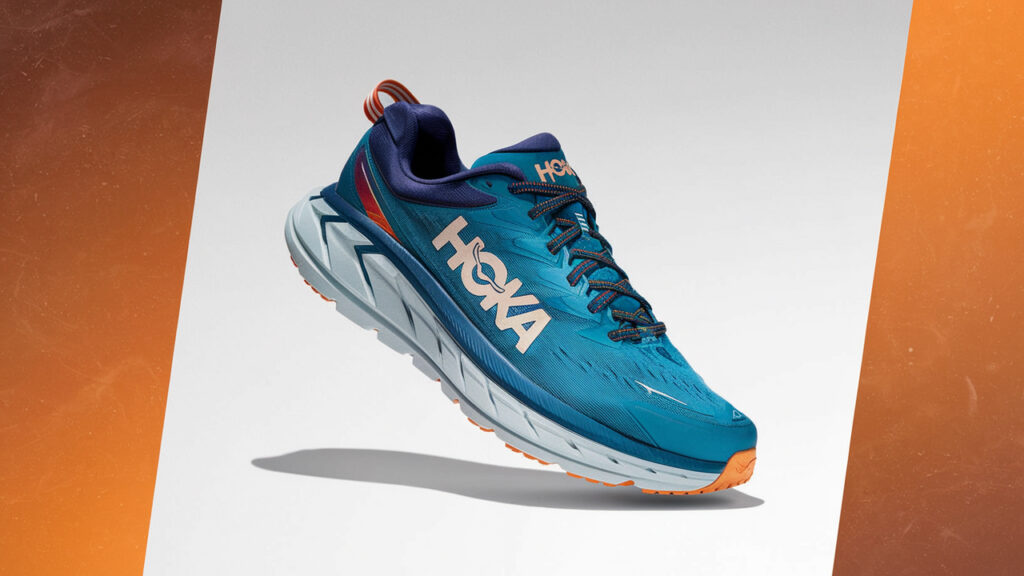How to Choose the Right Hoka Shoe for Your Foot Type
Not all feet are built the same—and that’s exactly why picking the right Hoka shoe for your foot type is so important. Whether you have flat feet, high arches, wide feet, or just want the perfect daily trainer, Hoka offers a shoe that matches your stride, structure, and comfort level.
In this guide, I’ll break down exactly how to choose the best Hoka shoe based on your foot type, including recommendations that are available on Amazon with fast shipping and multiple size options.

Table of Contents
1. Flat Feet or Overpronation: Go for Stability Models
If your arches collapse or your ankles roll inward when walking or running, you likely overpronate. For this, you’ll need a Hoka with stability features that gently guide your foot and prevent misalignment.
Top Picks for Flat Feet:
- HOKA Gaviota 5: Maximum stability and cushioning for flat feet.
- HOKA Arahi 6: Lightweight stability with J-Frame™ support for daily use.
Why it matters: These shoes support your arch, reduce fatigue, and help prevent injury over long distances.
2. High Arches or Supination: Look for Cushion + Flexibility
If you have high arches, your foot doesn’t absorb shock well, and you might feel pain in your heels or balls of your feet. You’ll need a neutral Hoka shoe with lots of cushion and flexibility to help absorb that impact.
Top Picks for High Arches:
- HOKA Clifton 9: Soft, balanced cushion that supports high arches without overcorrecting.
- HOKA Bondi 8: Maximum cushioning and shock absorption, ideal for sensitive feet.
Why it matters: The right Hoka will ease pressure from heel strike and help distribute weight more evenly.
3. Neutral Feet: Choose Versatile, Balanced Models
If your feet don’t overpronate or supinate, you’re in luck—you can wear most Hoka models. You should focus on finding a balanced, everyday shoe that fits your stride, lifestyle, and mileage.
Top Picks for Neutral Feet:
- HOKA Mach 6: Responsive, lightweight, and great for daily runs.
- HOKA Rincon 3: Budget-friendly, fast, and cushioned enough for long distances.
Why it matters: These shoes give you the best of both worlds—comfort and performance.
4. Wide Feet: Get More Room Without Sacrificing Support
If your shoes always feel tight in the toe box, or you get hot spots and blisters on the sides of your feet, it’s time to go wide. Hoka offers wide sizes in their most popular models.
Best Hoka Shoes Available in Wide Widths:
- HOKA Bondi 8 Wide: Roomy yet secure with max cushion.
- HOKA Clifton 9 Wide: Great for daily wear with extra forefoot space.
Why it matters: Wide shoes reduce irritation and promote natural toe splay, improving overall comfort.
5. Narrow Feet: Go for Secure Fit Models
If you feel like most shoes are too loose or your heel slips out while walking, you likely need a more snug-fitting shoe. Look for Hokas with structured uppers and a narrower midfoot design.
Recommended for Narrow Feet:
- HOKA Arahi 6: Snug, supportive fit and firm heel hold.
- HOKA Mach 6: Contoured shape with breathable, form-fitting upper.
Why it matters: A proper fit prevents slippage and ensures the shoe moves with your foot, not against it.
How to Know Your Foot Type
Not sure what category you fall into? Try this:
- Wet Test: Wet your foot, step on a brown paper bag or tile floor. If you see your full foot, you likely have flat feet. If you see just the heel and ball, you probably have high arches.
- Watch Your Wear Pattern: Outer heel wear = neutral/supination. Inner edge = overpronation.
- Discomfort Areas: Arch pain = flat. Heel/forefoot pain = high arch.
Or just get a free foot scan at a running store to be sure.
Final Tips for Choosing the Right Hoka
- Always try your true size first, but be open to sizing up ½ size for longer runs.
- For daily walking or standing, prioritize cushion + arch support.
- Rotate between a cushioned pair (Bondi) and a performance pair (Mach or Rincon) if you’re active multiple times a week.
Final Thoughts
Choosing the right Hoka shoe isn’t just about style—it’s about finding the perfect match for your foot shape, stride, and lifestyle. Once you find your fit, the comfort is next level. Trust me—your feet will thank you.
Click here to explore the best Hoka shoes for your foot type on Amazon
1. How do I know if I need a stability shoe or neutral shoe?
If your feet roll inward excessively (overpronation), you need stability. If your stride is neutral or you roll outward slightly (supination), choose neutral shoes. Flat feet usually need stability; high arches need cushion and flexibility.
2. Do Hoka shoes run true to size?
Most Hoka shoes run true to size, but some users with wider feet go up half a size or choose the wide width options for extra room in the forefoot.
3. Can I wear Hokas for walking and standing at work?
Absolutely. Models like the Bondi 8 and Clifton 9 are excellent for walking and standing all day. They’re built with cushioning that helps reduce fatigue on concrete, tile, or long shifts.
4. What Hoka shoes are best for people with bunions or foot pain?
Go for shoes that come in wide widths with a roomy toe box—like the Bondi 8 Wide or Clifton 9 Wide. The extra space helps reduce friction and allows toes to splay naturally.
5. Is it okay to use a running Hoka for casual or everyday use?
Yes! Many people wear Hoka running models for daily walking, commuting, or travel because they’re so comfortable. The Transport, Clifton, and Bondi are great all-purpose picks.

